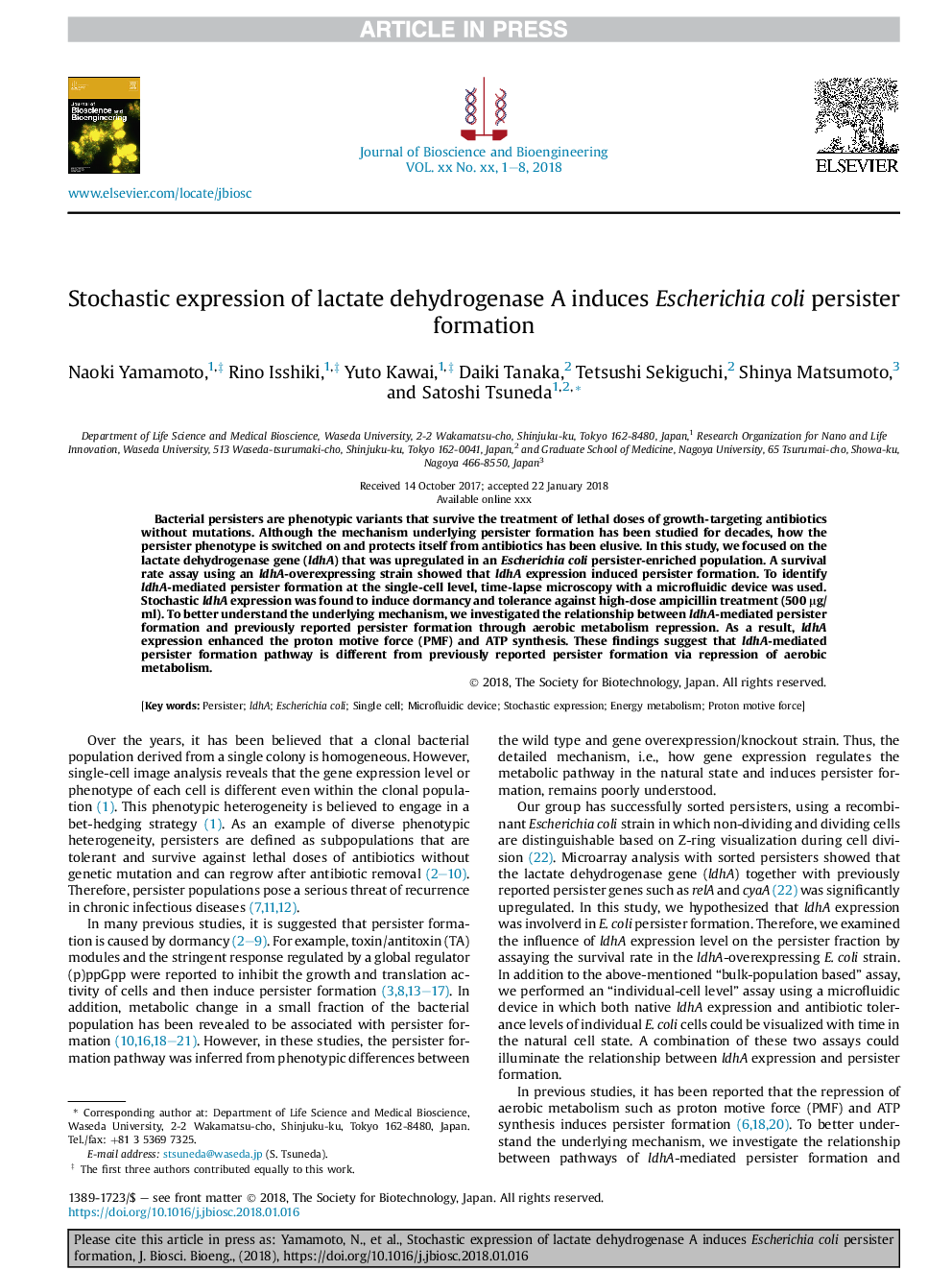| Article ID | Journal | Published Year | Pages | File Type |
|---|---|---|---|---|
| 6489706 | Journal of Bioscience and Bioengineering | 2018 | 8 Pages |
Abstract
Bacterial persisters are phenotypic variants that survive the treatment of lethal doses of growth-targeting antibiotics without mutations. Although the mechanism underlying persister formation has been studied for decades, how the persister phenotype is switched on and protects itself from antibiotics has been elusive. In this study, we focused on the lactate dehydrogenase gene (ldhA) that was upregulated in an Escherichia coli persister-enriched population. A survival rate assay using an ldhA-overexpressing strain showed that ldhA expression induced persister formation. To identify ldhA-mediated persister formation at the single-cell level, time-lapse microscopy with a microfluidic device was used. Stochastic ldhA expression was found to induce dormancy and tolerance against high-dose ampicillin treatment (500 μg/ml). To better understand the underlying mechanism, we investigated the relationship between ldhA-mediated persister formation and previously reported persister formation through aerobic metabolism repression. As a result, ldhA expression enhanced the proton motive force (PMF) and ATP synthesis. These findings suggest that ldhA-mediated persister formation pathway is different from previously reported persister formation via repression of aerobic metabolism.
Keywords
Related Topics
Physical Sciences and Engineering
Chemical Engineering
Bioengineering
Authors
Naoki Yamamoto, Rino Isshiki, Yuto Kawai, Daiki Tanaka, Tetsushi Sekiguchi, Shinya Matsumoto, Satoshi Tsuneda,
